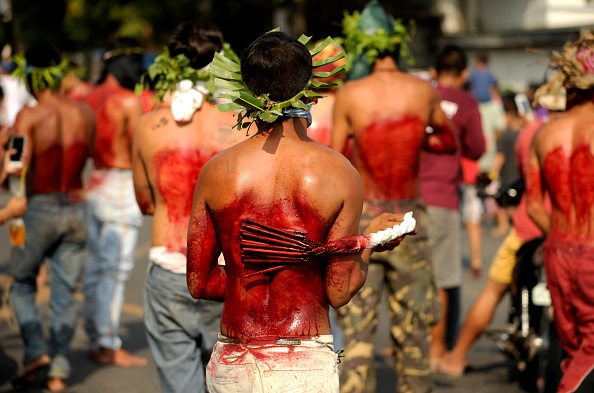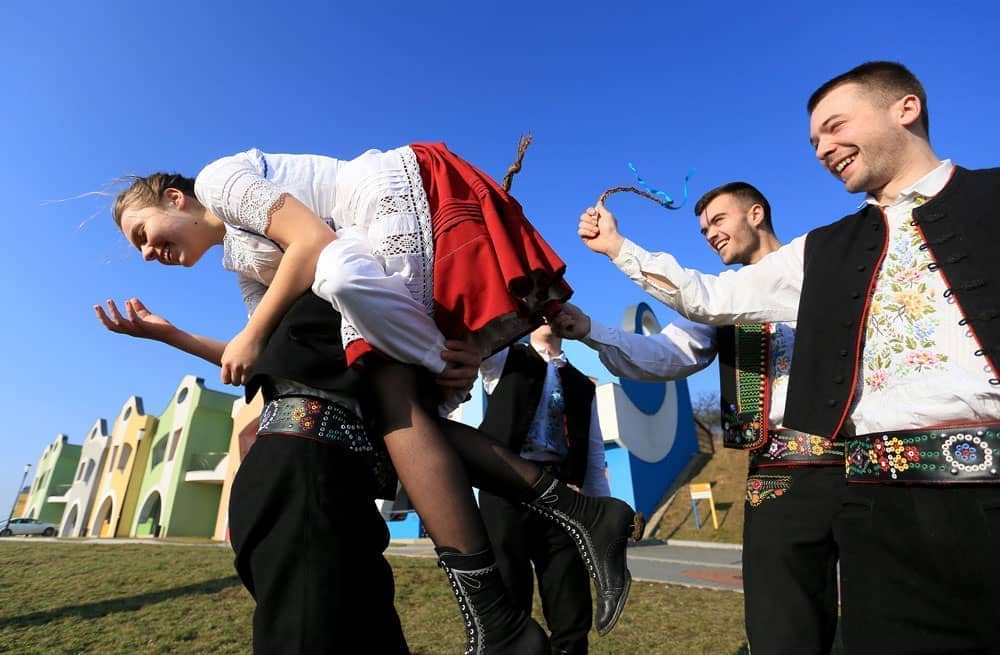You know where you are with Christmas. Trees, carols, nativity plays, holly and ivy, presents, mince pies, crackers, Dickens, It’s a Wonderful Life. Easter is the more important festival in religious terms, but it can’t compete with Christmas for sheer cultural and commercial dominance.
In contrast to jolly Father Christmas, the Easter Bunny is aloof and, frankly, a bit weird. His (her?) origins are elusive. German Lutherans are probably to blame for the Easter Bunny, as for so much else. The concept of mythical ‘Easter hares’ laying eggs for children was first mentioned in 1682 by Georg Franck von Franckenau, a physician and botanist, but he gives no hint as to how the custom came about. In 1874, the philologist Adolf Holtzmann speculated that the hare might have been a sacred animal of the Germanic pagan goddess of spring, Ostara, from which we get the word ‘Eastre’ in Old English. But even he admitted the link was tenuous. ‘The Easter Hare is inexplicable to me,’ he wrote.
A lot of Easter is inexplicable – there’s a reason Christmas movies are genre and ‘Easter movies’ aren’t. Here are a few inexplicable – or, at the very least, bizarre – local variations of Easter celebrations around the world.
Easter crime
In some regions, the men receive a hand-painted egg or a coin or a shot of vodka or plum brandy as a ‘thank you’ for the whipping. The women receive a bucket of cold water to the face
In Norway, Easter is a time for murder. Television and radio channels air grisly ‘Easter thrillers’ (påskekrim) in the run-up to Easter Sunday. Even milk cartons – made by Tine, Norway’s largest dairy producer – feature a cliff-hanger cartoon strip on their sides. Every year around 200,000 Norwegians submit their solutions to the milk mystery, the answer to which is revealed on ‘Easter Eve’. Påskekrim started in 1923 when the publishing company Gyldendal took out a front page newspaper advertisement to promote a new crime novel about a train robbery. Many readers confused the advert for a real story and the book became a bestseller after the truth was revealed.
Whipping
On the morning of Easter Monday, young men across rural Slovakia and the Czech Republic go through their neighbourhood gently flogging women on the buttocks with a whip made from willow twigs and colourful ribbons. The medieval practice, which was probably originally pagan, came from the belief that the vitality from the twigs in the whip would flow into the woman’s body, bringing good health, beauty and fertility. In Czech, the whip is called a pomlázka, which is derived from the word pomladit, meaning ‘to make younger’. In some regions, the men receive a hand-painted egg or a coin or a shot of vodka or plum brandy as a ‘thank you’ for the whipping. The women receive a bucket of cold water to the face. ‘Women hate Easter, men love it,’ Zuzana Beňušková, a social anthropologist, told the Slovak Spectator (no connection). ‘But on the other hand, women brag the following day about the number of visits they had.’
Giant omelette
Very little tells you more about a nation than its food. In parts of Russia and Slovenia it’s traditional for an abundant Easter breakfast to feature a little lamb sculpted out of butter. Australians eat chocolate Easter bilbies while no one else in the world knows what a bilby is. And in Bessieres, northeast of Toulouse, locals gather on Easter Monday to cook a giant omelette. If I had to choose a single object that represents the soul of the French people, I’d probably pick a giant omelette. It’s 13 feet wide, made with 5,000 eggs and takes more than half an hour to cook in a massive pan with wooden spoons the size of oars. The tradition is relatively modern – 1973 – but it harks back to an older local legend. Supposedly Napoleon, passing through Bessieres, ate an omelette prepared by an innkeeper which he enjoyed so much that the next day he ordered the townspeople to prepare a giant version for his entire army.
Easter witches
In Finland, the week before Easter is known as ‘torment week’ (piinaviikko). It is a time, rather like All Hallows’ Eve, when evil beings feel emboldened to roam the earth before the risen Christ’s victory over death banishes them back to Hell. On Palm Sunday, Finnish children dress up as witches and go door to door, offering to bless the homes in exchange for little gifts, like a sort of Easter trick-or-treat called virpominen. The witches carry birch or pussy willow twigs decorated with colourful feathers and recite a rhyme at the door: ‘I wave a twig for a fresh and healthy year ahead; a twig for you, a treat for me!’ The twigs may have originally represented the palms laid down before Christ upon his entrance to Jerusalem. On Holy Saturday, bonfires are lit to scare away evil spirits and trolls – and get rid of leftover wood.

Actual crucifixion
In some parts of the Philippines, such as San Pedro Cutud and San Fernando in the province of Pampanga, Passion plays (Senakulo) are taken distressingly seriously. Actors dressed as Roman soldiers hammer real two-inch nails – sterilised, naturally – through the hands and feet of the method actors playing Christ and the two thieves. The lucky three are then raised up to hang on their crosses for hours, but they do get an inauthentic footrest so they can support their weight to avoid, well, dying. The Catholic Church in the Philippines calls the tradition a ‘misinterpretation of faith’ but makes no serious attempt to stop it.
The Nutters’ Dance
Britain has plenty of its own peculiar local Easter traditions. In Hallaton, Leicestershire, bottles are kicked across a stream. In Peterlee, County Durham, eggs are whacked against each other to see which cracks first, like a messier version of conkers. Then in Bacup, Lancashire, there are the ‘Nutters’. On Holy Saturday, this all-male dance troupe paint their faces black, put on skirts and clogs and dance through the streets for up to five hours, led by a man cracking a whip called the Whiffler. The purpose of the custom is to drive out demons. The blackened faces are meant to protect the dancers from evil spells and may also have a connection the sooty faces of local miners when they emerged from the pits covered in coal dust. The Nutters are too nutty for some. In 2020, the year of Black Lives Matter, the group was kicked out of the Joint Morris Organisation for refusing to stop blacking up. The Nutters fiercely defend their custom, saying it is not connected with ‘any form of racial prejudice’. For what it’s worth, the local ethnic minority charity Lancashire BME Network has backed the Nutters.






Comments